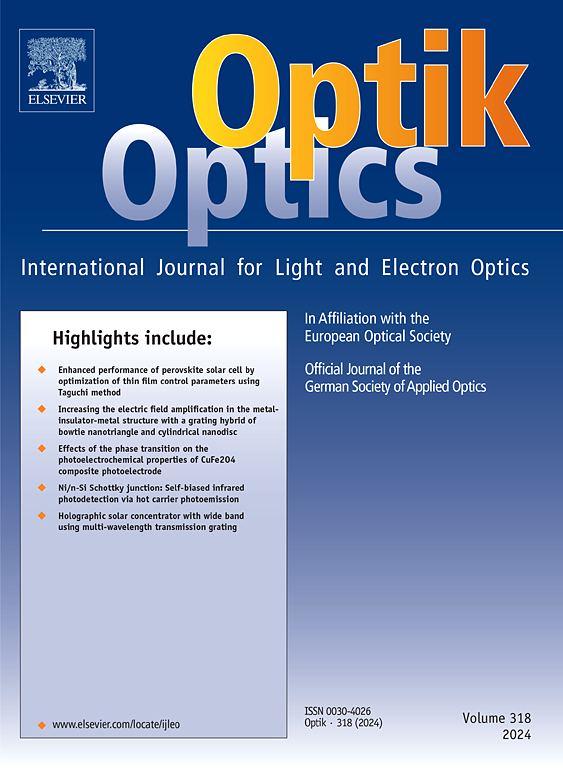Temperature-dependence of the optical transitions of spray pyrolysis derived Sn doped Co3O4 thin films
IF 3.1
3区 物理与天体物理
Q2 Engineering
引用次数: 0
Abstract
Understanding the temperature dependence of physical properties is essential for optimizing the performance of Co3O4 films, particularly with respect to their optical behavior. Previous studies have shown that Sn doping can influence the physical characteristics of Co3O4 films. In this work, the temperature-dependent optical properties of undoped and 2 mol% Sn doped Co3O4 (SCO) thin films, deposited on glass substrates via the spray pyrolysis technique, are investigated. The temperature effects were investigated using Raman, UV-Vis-IR spectroscopy and in-situ ellipsometry measurements. Raman analysis demonstrated that room temperature to 623 K domain is notably interesting as a stable single-phase range for both samples. Through an exhaustive ellipsometric analysis, including experimental and modeling studies, the evolution with temperature of key optical parameters such as film thickness, dielectric function, absorption coefficient, transition energies and Urbach energies have been successfully determined. The results highlight the influence of the applied heating on the optical responses. Particularly, the electronic transitions were found to decrease as the temperature increases. This dependence was analysed using the well-known Varshni model and the corresponding physical parameters were extracted.
喷雾热解衍生锡掺杂Co3O4薄膜光学跃迁的温度依赖性
了解物理性质的温度依赖性对于优化Co3O4薄膜的性能,特别是其光学性能至关重要。以往的研究表明,Sn掺杂会影响Co3O4薄膜的物理特性。在这项工作中,研究了通过喷雾热解技术沉积在玻璃衬底上的未掺杂和2 mol% Sn掺杂的Co3O4 (SCO)薄膜的温度依赖光学性质。利用拉曼光谱、紫外-可见-红外光谱和原位椭偏测量研究了温度效应。拉曼分析表明,室温至623 K域是两种样品的稳定单相范围。通过详尽的椭偏分析,包括实验和模型研究,成功地确定了薄膜厚度、介电函数、吸收系数、跃迁能和乌尔巴赫能等关键光学参数随温度的演变。结果强调了外加加热对光学响应的影响。特别是,电子跃迁随着温度的升高而降低。利用著名的Varshni模型分析了这种依赖关系,并提取了相应的物理参数。
本文章由计算机程序翻译,如有差异,请以英文原文为准。
求助全文
约1分钟内获得全文
求助全文
来源期刊

Optik
物理-光学
CiteScore
6.90
自引率
12.90%
发文量
1471
审稿时长
46 days
期刊介绍:
Optik publishes articles on all subjects related to light and electron optics and offers a survey on the state of research and technical development within the following fields:
Optics:
-Optics design, geometrical and beam optics, wave optics-
Optical and micro-optical components, diffractive optics, devices and systems-
Photoelectric and optoelectronic devices-
Optical properties of materials, nonlinear optics, wave propagation and transmission in homogeneous and inhomogeneous materials-
Information optics, image formation and processing, holographic techniques, microscopes and spectrometer techniques, and image analysis-
Optical testing and measuring techniques-
Optical communication and computing-
Physiological optics-
As well as other related topics.
 求助内容:
求助内容: 应助结果提醒方式:
应助结果提醒方式:


